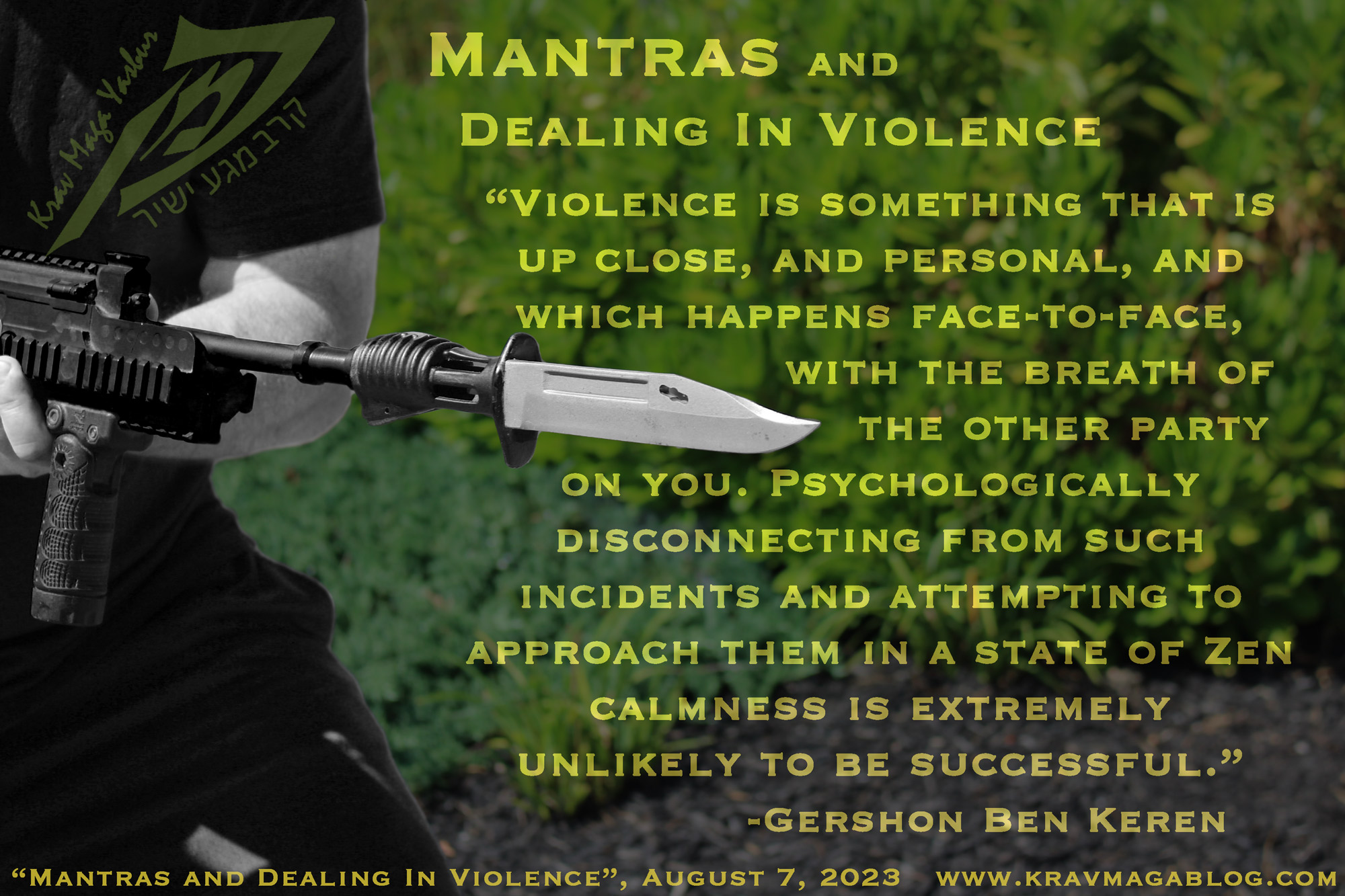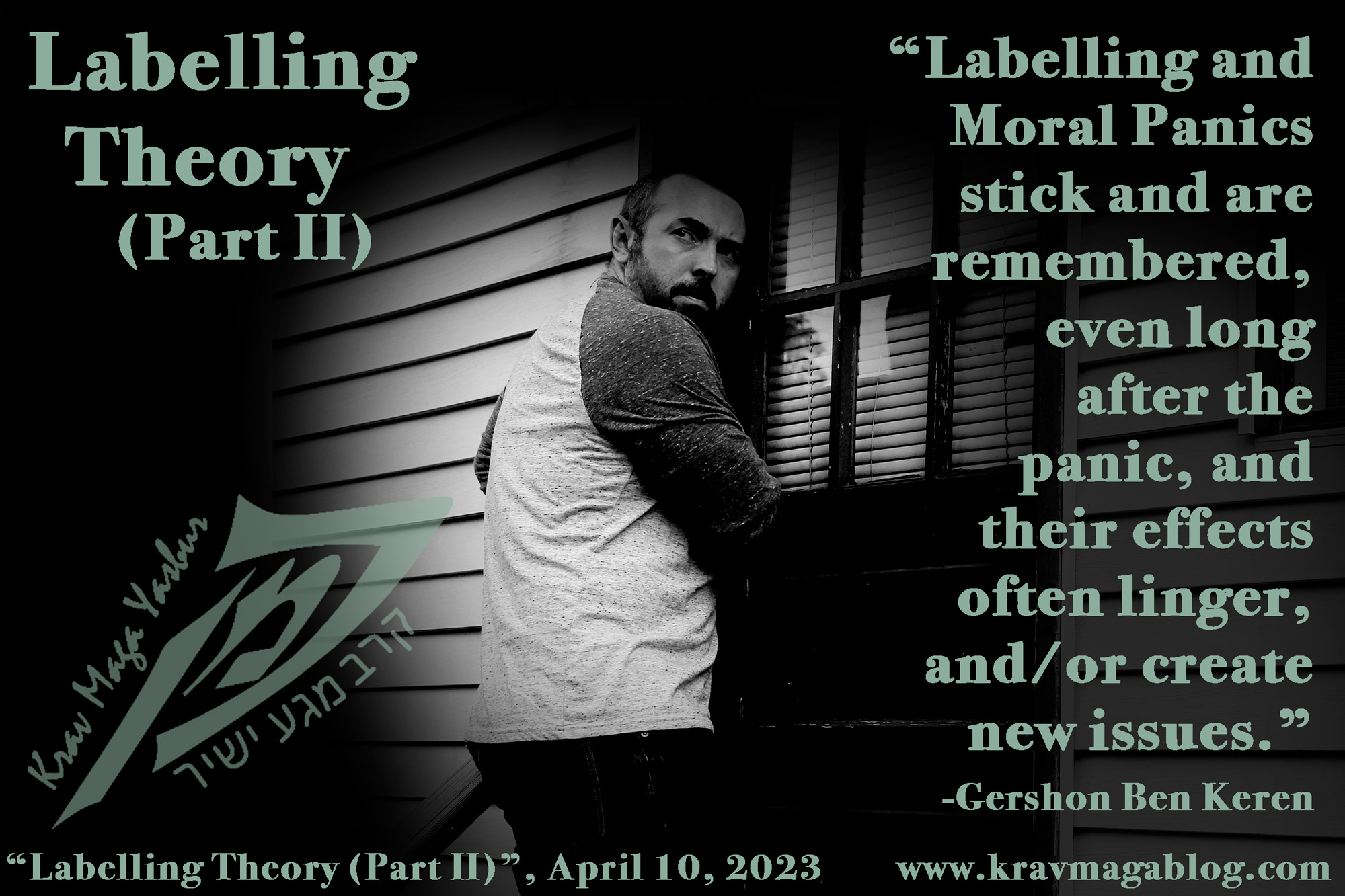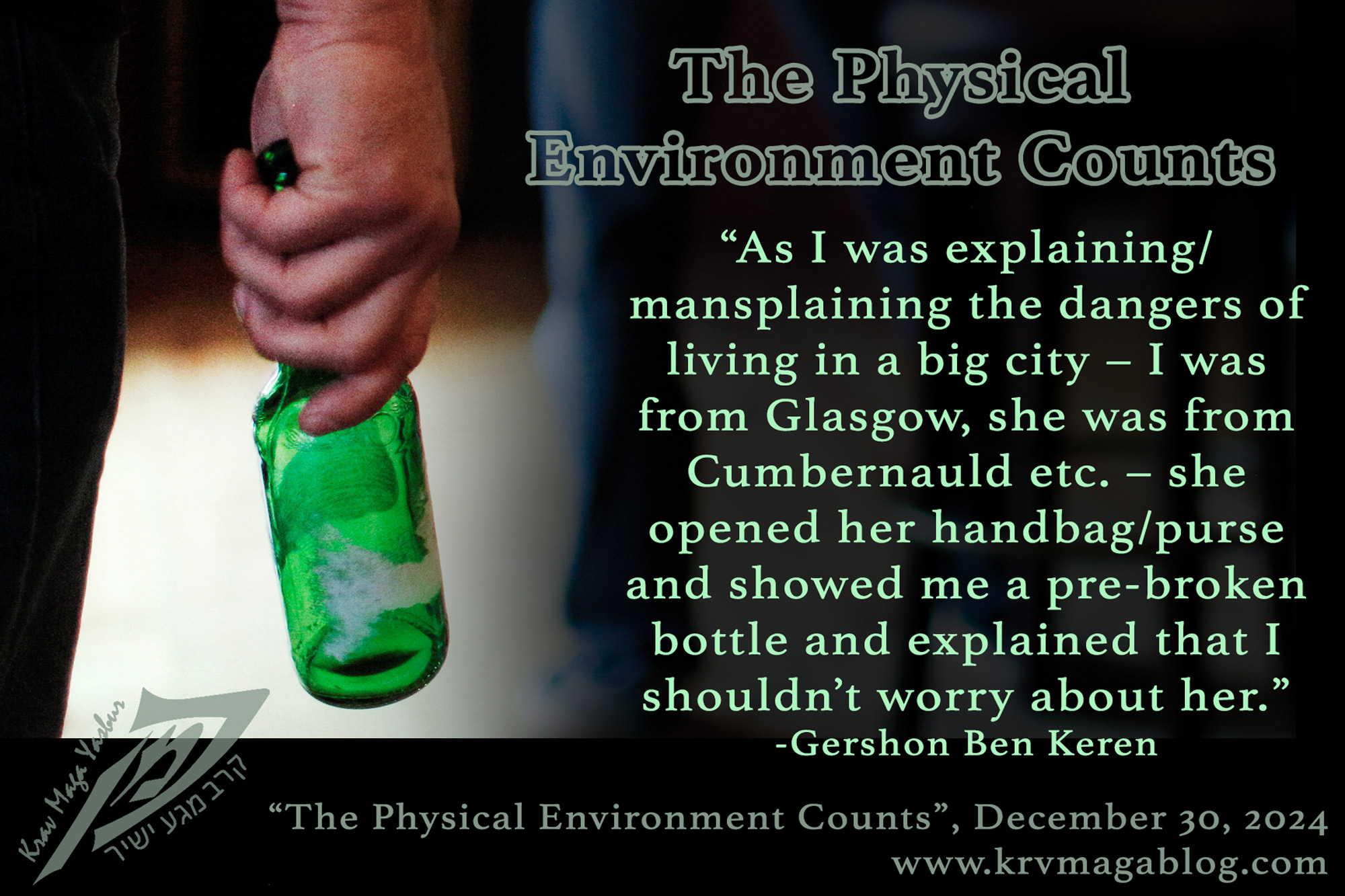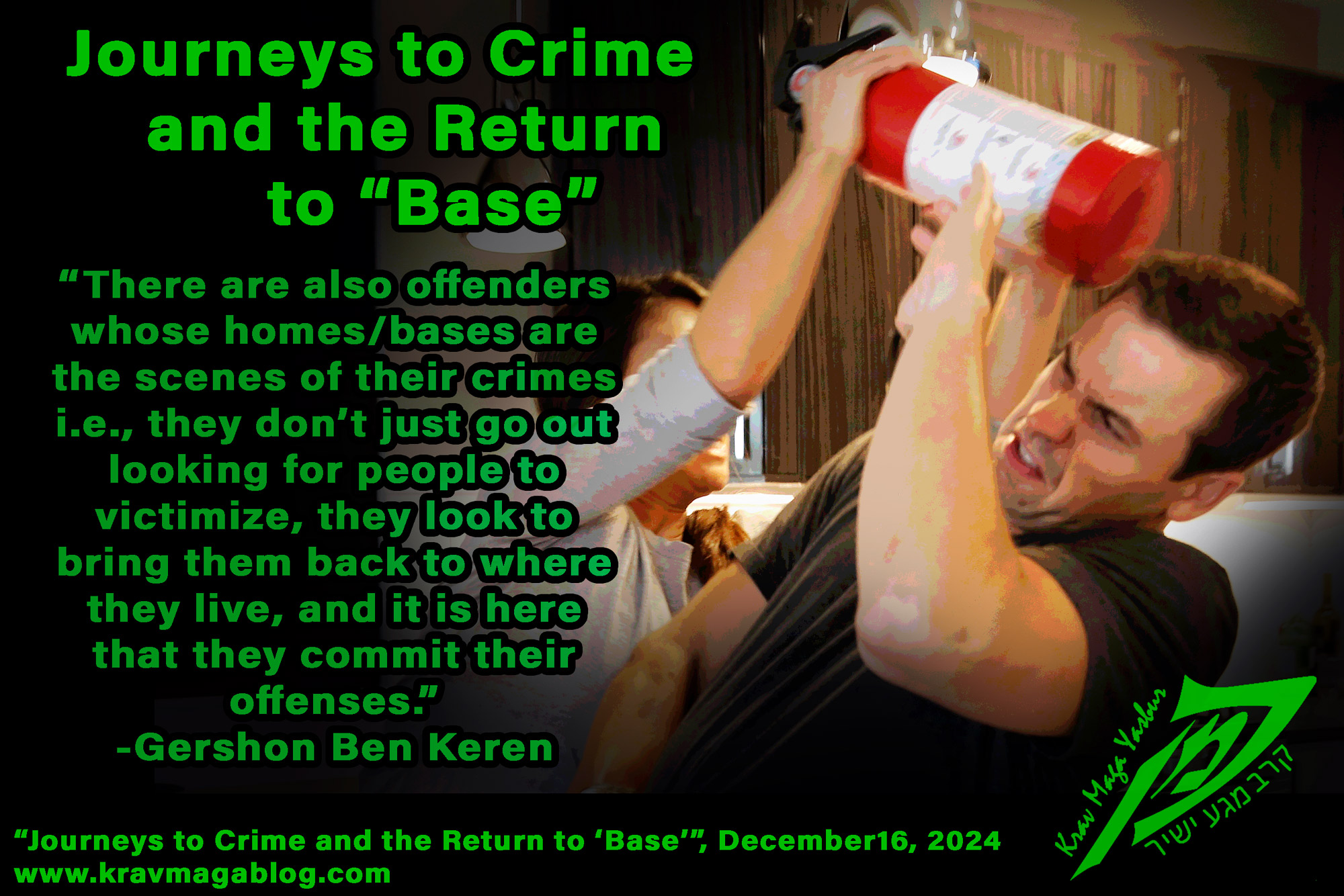Labelling Theory (Part Two), is an article written by Gershon Ben Keren, a 5th Degree Black Belt in Krav Maga, who teaches Krav Maga in Boston, MA. He has also authored three Amazon best-Selling Books on Krav Maga.
This is the second of two articles looking at labelling theory (the first can be accessed by clicking here). Labelling theory is a model that comes from Social Interactionism, where crime and deviancy is defined not by the action itself, but society’s reaction to it e.g., spray painting your name on a wall, doesn’t become a crime or deviant behavior until someone labels it as “vandalism”, and the person(s) who engage in the act as “vandals”. In this article I want to look at who decides these labels, and how labelling plays a part in the process of “moral panics”.
Although Becker, who proposed the idea of labelling in his book “Outsiders – Studies in the Sociology of Deviance”, was looking at those who were deemed deviant, his theory was fundamentally about power and the unequal distribution of power i.e., who gets to decide what is, and who is, deviant, and is this view shared by those who are being judged and labelled as deviant? In a school setting a child may be unjustly judged by a teacher as engaging in bullying behaviors, when in fact they are simply engaged in mutual teasing with another child etc. The teacher who has the power in this relationship may then label the child as a “bully” and/or a “troublemaker”. There is no debate or discussion in this matter, as the child has no power in the relationship. The teacher may then talk to other staff members about that child and the label starts to stick. Other children may now start to interact with the child based on the label, trusting that the person in power knows what is right and wrong etc. The child may also start to believe the teacher’s assessment of them, interpreting and analyzing their internal thoughts and beliefs through the lens of the label they have (incorrectly) been assigned. In fact the most reflective and introspective child may spend more time analyzing who/what they are, than those who are less self-aware etc. In time, it may be that as Frank Tannenbaum states, “The person becomes the thing he is described as being.” This is one of the dangers of “over enthusiastic” school bullying programs, that present zero-policy programs i.e., they are sometimes too quick to label children as bullies, in an attempt to eradicate bullying, and by doing so “create” more bullies, and perpetuate the problem. Over enthusiastic labelling is self-defeating.
Stanley Cohen, the British Sociologist/Criminologist was very interested in the role that the media played, in what Jock Young, described as “Deviance Amplification” i.e., how did the media create “folk devils” out of minorities and sub-cultures that really didn’t pose any major threat to society at all. Cohen suggested that such folk devils were the creation of moral panics, and identified a number of steps/stages that led to such panics. The first step was “stage setting”. This is where those in positions of power, such as the media and/or politicians, draw the attention of an audience/society to a particular problem. This normally involves sensationalizing and exaggerating the extent of the problem. In a 1995 article, John Dilulio a political scientist, wrote an article in the Weekly Standard, where he introduced the idea of the “Super Predator”. He argued that there was an alarmingly high number of young offenders who were beyond rehabilitation, and who would only go on to commit more and more violent crimes unless they were stopped early on in there criminal careers. He never provided in this article, or since, any empirical evidence to support this position/idea. In fact if it is one thing that is pretty much accepted amongst all schools/disciplines of criminology – due to the overwhelmingly statistical support – it is that most young people age out of crime, rather than increase their offending as Dilulio argued. The next step/stage is exaggeration/escalation. This is where the rumor mill, and gossip train, gets started. People start to believe that what is a minor problem, involving a few, is a major problem effecting the many. The arguments are normally extremely simplistic and lack nuance. They have to be, to be communicated quickly and widely. In the 1990’s politicians and the media, got caught up with the “Crack Epidemic”, and started to link it to the idea of the “Super Predator”, casting any young black male, living in impoverished urban areas, as being violent and dangerous. The media often labelled these areas as “War Zones”, where the police were unable to go. This then leads to the symbolization, and labelling of the group, with politicians or other leaders engaging in “Moral Entrepreneurship”, promoting their own agendas under the guise of advocating for the labelled group. This is then followed by some form of crackdown. In the case of the “Super Predator” moral panic, the Criminal Justice System, introduced three-strike laws and mandatory minimum sentences, with law-enforcement being directed to focus on eliminating the “Crack Epidemic”. Eventually there is either a decline in interest, and/or some type of resolution.
Labelling and Moral Panics, stick and are remembered, even long after the panic, and their effects often linger, and/or create new issues – one that those in power aren’t interested in as they only effect the individuals and the group who were labelled e.g., the fact that large black, urban areas, were depopulated of young black men, had significant effects on members of those locales, including the reduced opportunities for young black women to find partners, which in turn affected the birth rates in those areas etc. Labels give us a quick, shorthand, that allows us in one word to communicate a lot of ideas and opinions, and should be used wisely and sparingly, especially when they form part of a moral panic.
0 COMMENTS















